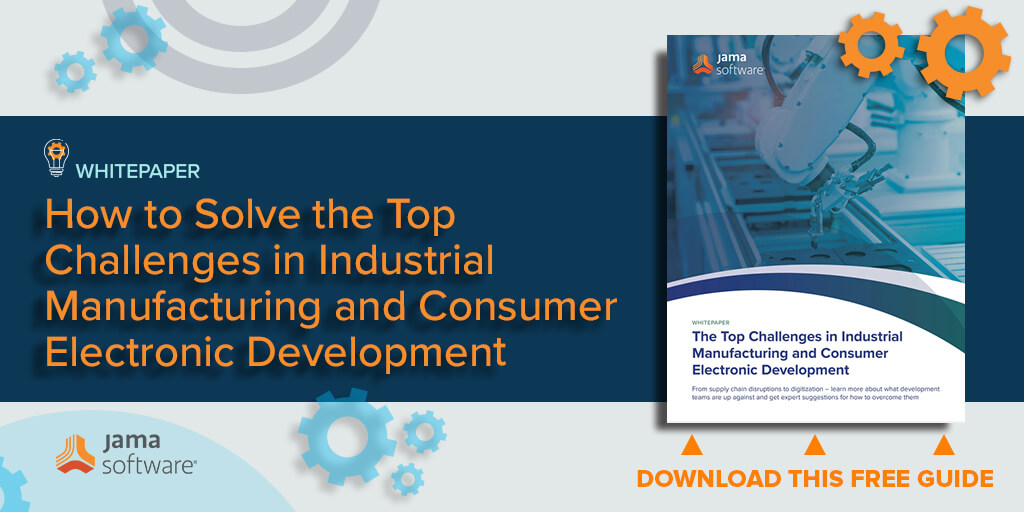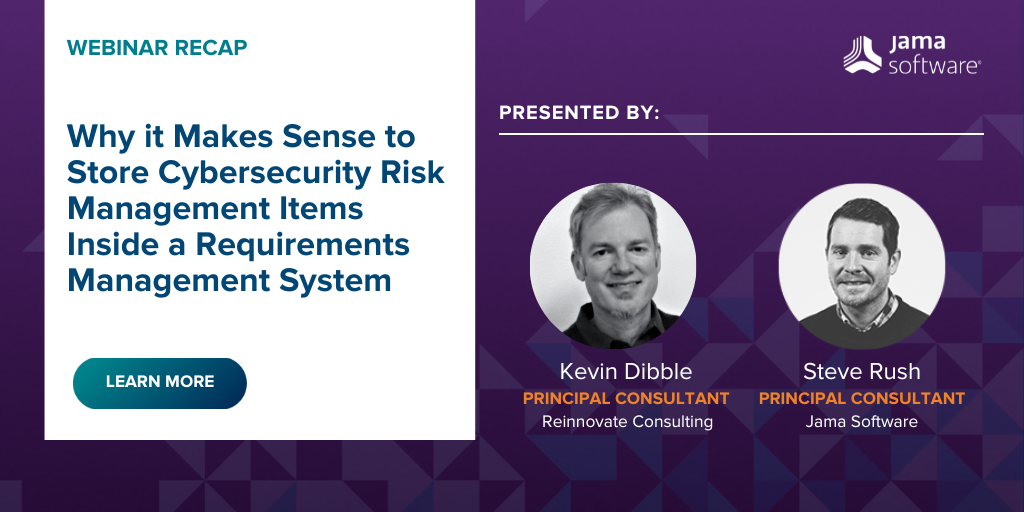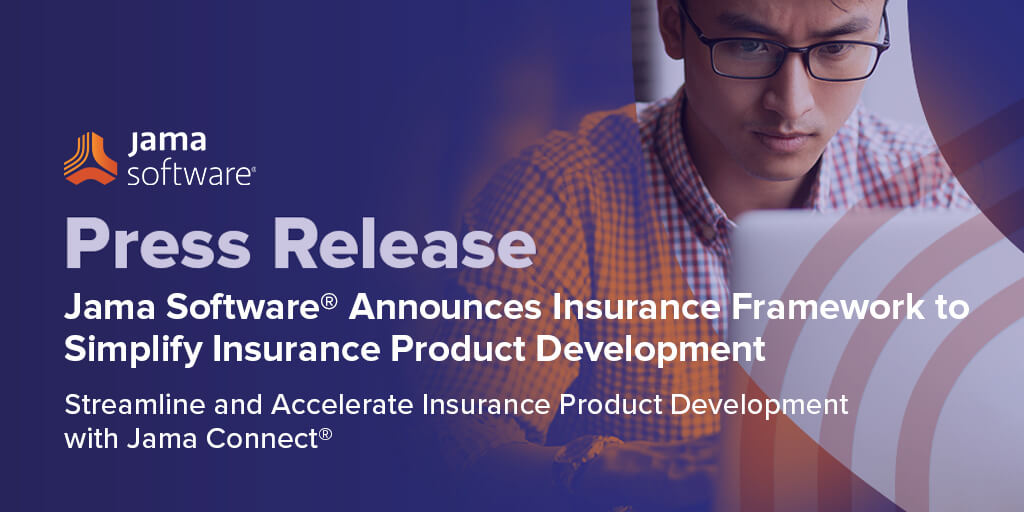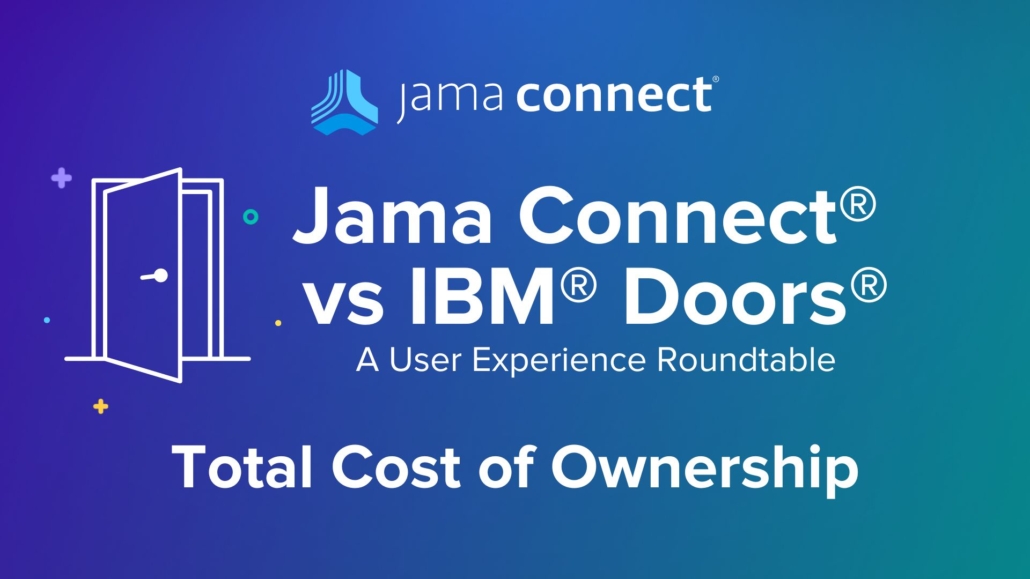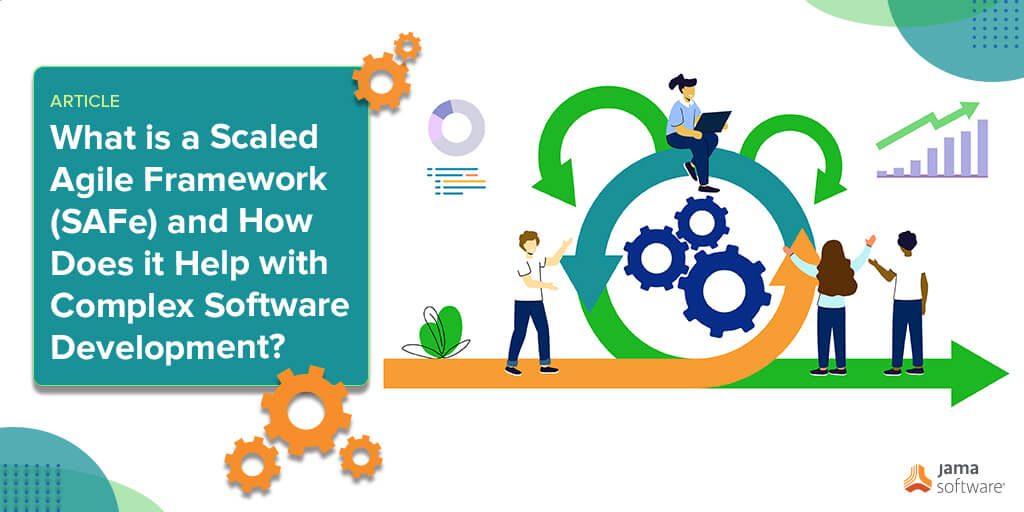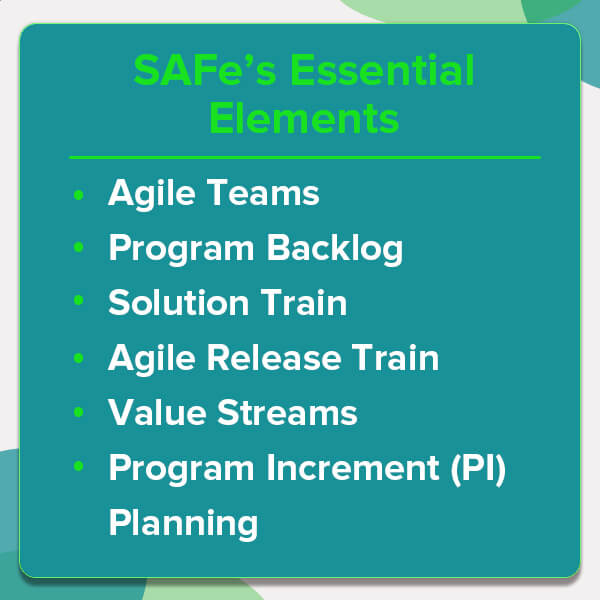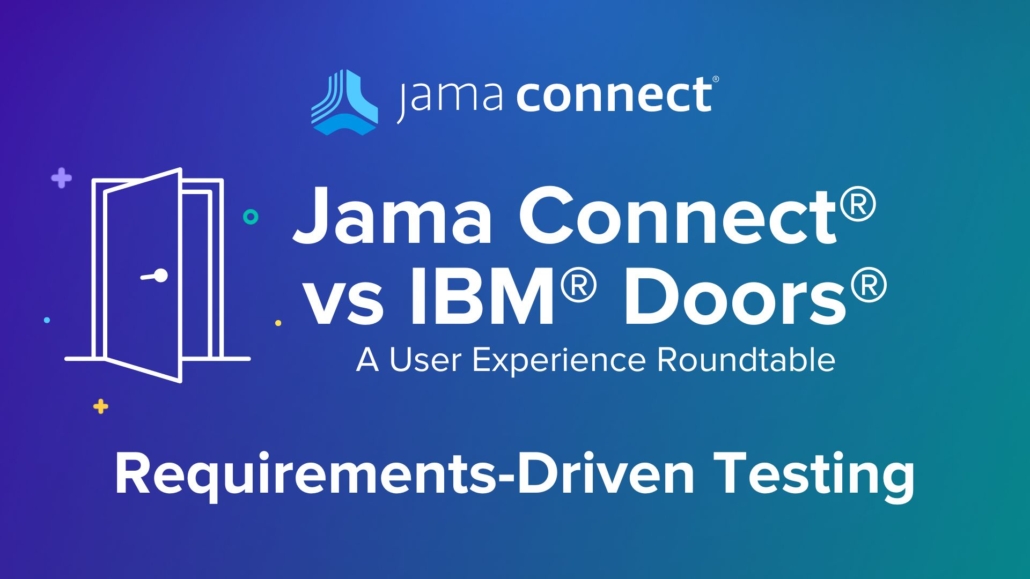
In this blog, we recap the “An Overview of the EU Medical Device Regulation (MDR) and In-Vitro Diagnostics Regulation (IVDR)” webinar.
Looking to stay ahead of ever-evolving regulations governing medical devices?
In this webinar, we discuss the continual rollout of the EU Medical Device Regulation (MDR) and In-Vitro Device Regulation (IVDR) and the impact they’re having on the medical device industry.
Vincent Balgos, Director of Medical Device Solutions at Jama Software andSaby Agai, Sr. Consultant at Jama Software, provide a high-level overview of the new regulations, along with general industry observations and future considerations for organizations with medical products marketed in the EU market area, including:
- New classifications, grandfathering clause, and risk management requirements
- The number of notified bodies, backlog, and remediation efforts for placed products
- Future considerations regarding the compliance compatibility of IVDR & FDA and traceability
- Finally, learn how the Medical Device Framework in Jama Connect® can help streamline your compliance efforts and ensure your products meet all the necessary regulatory requirements.
Below is an abbreviated transcript and a recording of our webinar.
为什么它是有道理的存储网络安全风险的人吗agement Items Inside a Requirements Management System
Saby Agai:So, in the first part of the webinar we will talk about the EU medical device regulations. There is a small agenda to that. Basically, we would like to show the key changes and challenges that the MDR means compared to the MDD. We would also like to talk a little bit about what we see as the challenges for the process transformation of the medical device developers and also a bit of discussions with the race on the timeline for the MDR. The second section is on the MDR for the MedDev engineering. So basically, how the engineering teams can do anything with the MDR. We’ll talk about harmonized standardization. How does that fit in the concept of the MDR? And some of the medical device best practices that we would recommend. So the medical device regulations now has quite a bit of history because the MDR is valued also for existing [inaudible 00:04:15] devices and also for all the new devices.
The medical device regulations entered into force historically in May 2017, and there was a bit of extension period in 2020 that the certificates issued under the MDD before the MDR remained valid up to four additional years. So it was a bit of a time extension for manufacturers to migrate the legacy devices to the MDR. Recently 2023, the EU commission had the new rule based on 607 was the number of it on the time extension for the medical device regulations. So there are two-time extension now in force for December 2027 and 2028 for all devices. As part of this modification, the commission removed the sale of period from the original context of the Medicaid device regulation.
Three key area that we would mention that we see as key challenges with the MDR is first is the technical documentation. So because of the legacy medical devices has to be reclassified in a context of the new MDR, those manufacturers highly likely will face it extended set of documentation for market clearances in the EU. It’s particularly true for software as a medical device because, basically the class one level has removed by legislation for all software as a medical device. The other thing on the technical documentation is that the MDR is far more prescriptive about the requirement content of the technical documentation, and it’s particularly true and there are more detailed requirements needed for the quality management system. So the manufacturer will have to ensure that they not only have full access and control for the documentation of the device, but also they should keep the eye on the market and the vigilance market, post-market vigilance area, as well as publication or new common specifications.
RELATED:Buyer’s Guide: Selecting a Requirements Management and Traceability Solution for Medical Device & Life Sciences
Agai:So there is a bit of higher focus on the post-market activities in the context of the MDR. And the technical documentation basically has two key parts in Annex II, annex III it’s detailed. Annex II there is a list of requirements for the technical documentation itself for the device design, and also, in Annex III, we see details or requirements for technical documentation post-market surveillance. So nothing particularly new, only an extended set of expectation and requirements for all these contents. Little note something on the technical documentation. So historically, the technical documentation has a tradition to be seen as a burden on the med tech developers and additional administrative work. And quite often, at the end of the development cycle, there is a massive effort made to make what is documentation available for regulators and also for market clearance. It definitely could require very intense administrative work from the engineering sometimes stress involved and also, the content creation has not much help or not much support for the regional engineering activities, which is the development.
So these content created purely to support the market access activities and it should not necessarily should be a case, though. So, for example, we in Jama has a medical solution. It’s a example proven a tool actually can support both med tech developers to enhance the development efficiency as they develop a new device as well as to support these technical documentation needs at the same time. So it’s a opportunity also for organizations to get most out of using a tool when they thinking about to ease the burden of the medical device regulation technical documentation part.
RELATED:Jama Connect®Validated Cloud Package for Medical Device and Life Sciences
Agai:第三但不是最后,有一个新的particularly in EU requirements for the unique device identifier. So basically, 2021 was a deadline to register an MDR UD MDR devices with the UDI in the [inaudible 00:09:02] framework, and for the IVDR, it’s 2022. Looking into purely on the numbers, we could say that the content of the MDR compared to the MDD is actually four time heavier. So the extent and the legal tax basically is four time more. There are five plus on axis that we can see, and there is a special attention on safety and patient safety particularly because 293 times mentioned the safety word in MDR where in the MDD was the 24. All these numbers also telling that the regulators in EU want to have higher scrutiny compared to the MDD, and they also have more details on that level of expectation that they would like to see from manufacturer. And there is a definite focus on patient safety that we can see.
Two more things to mention is that quite often, in the context of the MDR, the legacy devices should be reclassified into a higher level class. So it means that the quality management process support is more intense, and more support expected. More activities and works are expected from the manufacturer to keep the same device basically on the market. It also could mean that companies should take a step for high-level maturity as an organization and it’s true also for the design and device development activities. So one of the challenge with that is that if we talk about the same device with higher regulatory scrutiny, how do we retain and enhance profitability? Because the administrative burden is definitely something that goes towards the cost part of the profitability. So the design and development goes under higher level of process expectation in that sense, and it goes higher level of design documentation needs as well. So one of the advantages using the tool in general medical device environment that the medical solution can ease actually this work and enable a bit quicker, and the developers can leverage a little bit more help on these challenges.


